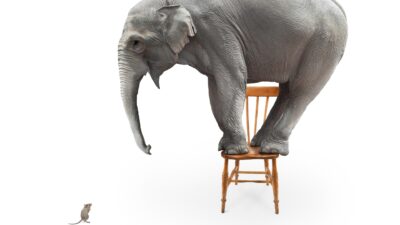This article was originally published on Fool.com. All figures quoted in US dollars unless otherwise stated.
2020 has been a wild year for investors. The stock market soared to new highs, only to plunge in the wake of the coronavirus outbreak. After hitting bottom, markets have soared upward in a quick recovery, and at least a couple of stock benchmarks have reached new records once again.
When the initial phase of the COVID-19 outbreak led to one of the fastest bear markets in history, the best advice investors could follow was not to make any rash decisions with their investments. That advice served those who followed it well, as the bounce has helped many investors recover much or even all of their losses. Staying pat was hard, though, if you felt blindsided by the coronavirus crisis and suddenly became aware that the risk level in your portfolio was too high.
Fortunately, you now have your chance to reconsider your investing strategy calmly and objectively. If the bear market was a wake-up call that you had too much risk in your portfolio, then now that stocks have recovered most of their lost ground, you can adjust your asset allocation without doing major damage to your long-term financial prospects.
Letting it ride
The 2010s were one of the most successful decades ever for stock market investors. The right strategy to follow was to get money into the market whenever you could, especially taking advantage of periodic dips to add to your positions. With very few extended downward moves in the market, it was easy to think that owning stocks didn't really involve much risk.
However, the big gains from the 2010s set up some investors for a surprisingly painful shock. Not only did the coronavirus bear market remind investors that big downturns could happen, but it also came at a time when many investors hadn't rebalanced their portfolios for a long time. As a result, many people's stock allocations had risen above their past levels, leaving investors even more vulnerable to the stock market downturn.
Add to that the fact that yields on bonds and other fixed-income investments have fallen to such low levels that the income they pay is insufficient for most investors' needs. That pushed people into dividend stocks, boosting overall allocations to the stock market and further adding to risk.
Avoiding the kneejerk reaction
Many people realized only after the fact that they were uncomfortably overexposed to stocks in their investment portfolios. The worst possible way to respond would have been to sell at the lows. With markets down as much as 30% between mid-February and March, selling out would have meant taking huge losses. Moreover, you would've missed out on the nearly 40% gain in some stock market indexes since those lows, repeating a mistake that millions of investors have made in past crashes and bear markets.
If you successfully held your ground and stuck with your strategy, you've probably seen a nice recovery in your portfolio. But that doesn't mean that you should forget about your concerns regarding your risk tolerance. If you now know that you're not inclined to deal with a drop of the magnitude we saw in early 2020, then you should adjust your investing strategy to be more conservative. Moreover, you can make those adjustments now, because reducing your stock portfolio won't result in anywhere near the losses that you would've locked in just a couple months ago.
2 ways to get your portfolio in line
Investors have a couple of things they can do to adjust their portfolios to reflect their new risk tolerance. For some, it'll be enough simply to rebalance your investments, getting your allocations to stocks, bonds, and other asset classes back in line with their long-term targets. Even though many stocks haven't fully recovered their losses from the bear market, you might still find yourself needing to reduce your stock positions to rebalance effectively if it's been a few years since you last did so.
The more extreme move is to reduce your target stock allocation. That will necessarily involve making sales and exchanges of various investments, with the usual tax and cash flow consequences. For many, the peace of mind you can get from reducing the future volatility of your overall portfolio is worth the losses you'll lock in -- especially since those losses are probably much smaller than they were back in March or April.
Don't wait
Stocks can do anything in the short run. Waiting to take action could let your portfolio recover further, but it could also leave you vulnerable to another leg lower if it comes.
If you now realize your risk tolerance for stocks is lower than you thought it was, now's the best time to adjust your portfolio to reflect your new needs. That way, you'll be better prepared to deal with whatever comes next -- and more likely to avoid mistakes that could cause long-term damage to your finances.
This article was originally published on Fool.com. All figures quoted in US dollars unless otherwise stated.










